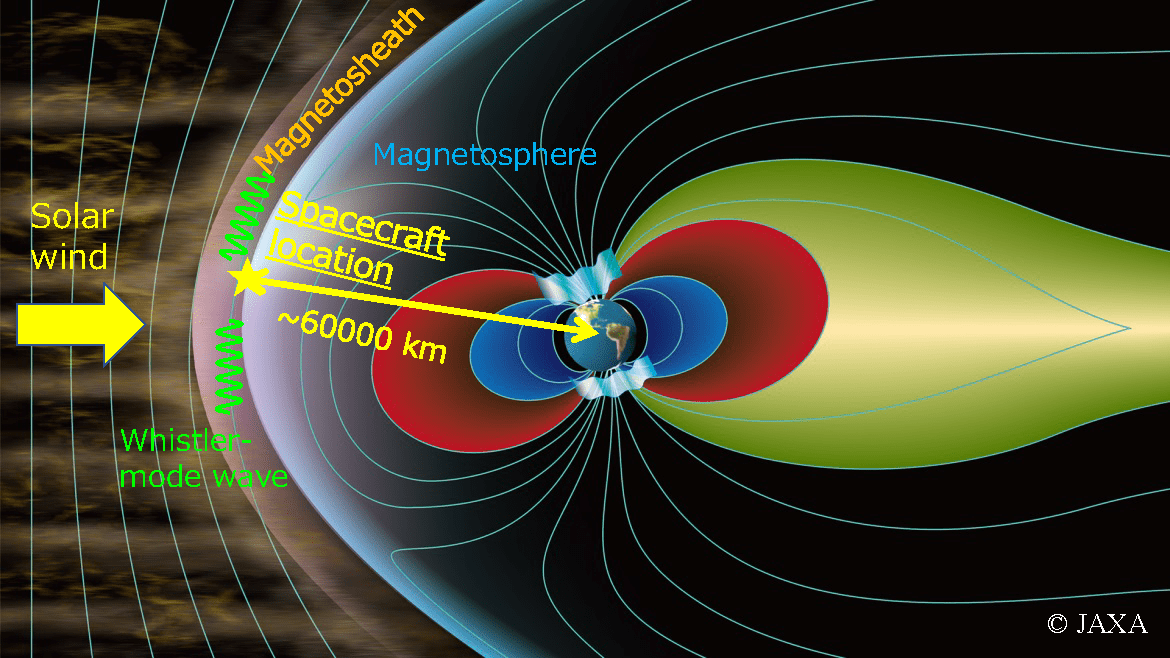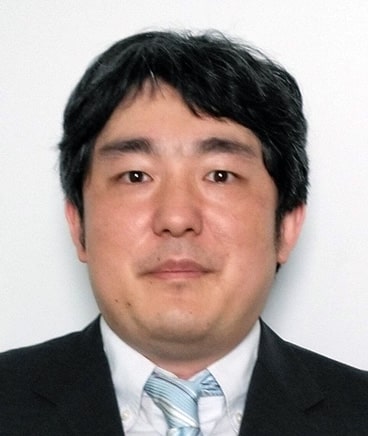Observational Confirmation of Theory of Efficient Electromagnetic Wave Growth ~ Direct detection of energy transfer from electrons to plasma waves in space ~
Oct. 5, 2023 | GATEWAY to Academic Articles
Except in the vicinity of celestial objects, charged particles that construct the plasma, which fills space, no longer collide with each other due to extremely low number densities. In such collisionless conditions, the acceleration and scattering of charged particles are caused by the electric and magnetic fields, especially those related to plasma waves, which are thought to operate efficiently in various regions of space. Electromagnetic whistler-mode waves, which is addressed in the present study, play important roles in particle acceleration and scattering in space, such as particle acceleration to relativistic energy in radiation belts in planetary magnetospheres and electron scattering that cause particle precipitation to trigger pulsating auroras. By analyzing data obtained by NASA's Magnetospheric Multiscale (MMS) spacecraft, we have successfully detected direct evidence of energy transfer from electrons to electromagnetic whistler-mode waves in space just outside of the Earth’s magnetosphere (near (dayside) magnetic reconnection and in the magnetosheath region). The energy transfer rate from cyclotron resonant electrons to the wave and the growth rate of waves are derived based on these observations. Furthermore, the observed features are consistent with theoretically predicted efficient wave growth, which is called nonlinear growth. This first detection of energy transfer between electrons and waves in space and verification of nonlinear wave growth will contribute to advancing our understanding of particle acceleration and scattering in space plasma and of electromagnetic wave generation processes.
Research Summary

At altitudes of several thousand to several tens of thousands of kilometers from the Earth, the plasma density that fills space becomes extremely low, and the charged particles that construct the plasma no longer collide with each other. In such collisionless conditions, the acceleration and scattering of charged particles are caused by the electric and magnetic fields. Waves occurring within the plasma are called plasma waves, and the whistler-mode waves*1 (Fig. 1) that we focus on in the present study are one type of wave classified as electromagnetic plasma waves in the plasma waves. Acceleration and scattering of charged particles related to plasma waves are thought to operate efficiently in various regions of space. In this study, we analyzed data measured by the Magnetospheric Multiscale (MMS) spacecraft*2 during electromagnetic whistler-mode wave events that occurred near magnetic reconnection*3 and in the magnetosheath*4 region (Fig. 2). By applying the method of wave-particle interaction analyzer (WPIA)*5 to electromagnetic field and electron data with an unprecedentedly high time resolution, we identified a characteristic inhomogeneity (nongyrotropy) in the electron velocity distributions, which indicates effective energy transfer from cyclotron resonant electrons to the whistler-mode waves. The MMS spacecraft can observe the spatial gradient of magnetic field intensity with four-point observations, and the spatial gradient of magnetic field intensity in the background magnetic field direction is a critical factor for nonlinear wave growth*6. By using the observed spatial gradient of magnetic field intensity with observed physical quantities, we show that the observed features are consistent with the preferential condition for the nonlinear wave growth with very few assumptions. This result directly demonstrates that nonlinear growth plays an important role in electromagnetic cyclotron waves, including whistler-mode waves, generated in various regions in space. Even in the magnetosphere, which is currently being observed by JAXA’s Arase satellite, the whistler-mode waves addressed in this study are related to various phenomena such as electron acceleration to relativistic energies in the radiation belt, and precipitation of high-energy electrons into the atmosphere as diffuse or pulsating auroras*7 due to scattering of electrons. This study provides new insights into the understanding of such various space plasma phenomena, and demonstrates the usefulness of the method of WPIA in future missions for space plasma physics.

Terminologies
- *1 Whistler-mode wave : Whistler-mode waves are one of the electromagnetic plasma waves with a right-handed rotation relative to the background magnetic field. It can exist only at frequencies below the electron cyclotron frequency and the electron plasma frequency. Chorus waves, which have been actively studied in the magnetosphere, are also one type of the whistler-mode wave.
- *2 Magnetospheric Multiscale (MMS) spacecraft : Four spacecraft launched by the National Aeronautics and Space Administration (NASA) for the primary purpose of studying the magnetic reconnection that occurs in the Earth's magnetosphere. When the data used in this study was obtained, they were flying in a tetrahedral formation with a separation of about 10 km. (https://mms.gsfc.nasa.gov/)
- *3 Magnetic reconnection : The phenomenon that occurs when magnetic fields are not parallel in various regions of space, such as the dayside magnetopause, which is the boundary between the decelerated solar wind (magnetosheath) and the magnetosphere, and the magnetotail in the magnetosphere. The energy of the magnetic field is transferred to charged particles through the reconnection of the magnetic field, which causes drastic particle acceleration.
- *4 Magnetosheath : The region where the solar wind is slowed down to subsonic speeds in front of the magnetosphere.
- *5 Wave-particle interaction analyzer (WPIA) : A new analysis method to quantitatively analyze energy transfer between charged particles and plasma waves by comparing the direction of the wave electric field and gyro-phase distributions of charged particles that rotate with the wave.
- *6 Nonlinear wave growth : Efficient wave growth based on a theory for large-amplitude electromagnetic cyclotron waves (including whistler-mode waves) that is more efficient compared with linear growth. The key factors are a temporal variation in wave frequency and/or a spatial gradient of magnetic field intensity on addition to the wave amplitude.
- *7 Diffuse or pulsating auroras : Relatively unstructured aurora that is caused by scattering of trapped electrons due to interaction with whistler-mode waves. When there is no wave scattering, the trapped electrons move back and forth (north and south) along the magnetic field lines. A pulsating aurora is a type of diffuse aurora in which electron precipitation turns on and off in response to on/off of waves in the magnetosphere, causing the diffuse aurora to pulsate quasi-periodically.
Information
| Journal Title | Nature Communications |
|---|---|
| Full title of the paper | Direct observations of energy transfer from resonant electrons to whistler-mode waves in magnetosheath of Earth |
| DOI | https://doi.org/10.1038/s41467-022-33604-2 |
| Publish date | 28 October 2022 |
| Author(s) | N. Kitamura, T. Amano, Y. Omura, S. A. Boardsen, D. J. Gershman, Y. Miyoshi, M. Kitahara, Y. Katoh, H. Kojima, S. Nakamura, M. Shoji, Y. Saito, S. Yokota, B. L. Giles, W. R. Paterson, C. J. Pollock, A. C. Barrie, D. G. Skeberdis, S. Kreisler, O. Le Contel, C. T. Russell, R. J. Strangeway, P.-A. Lindqvist, R. E. Ergun, R. B. Torbert, J. L. Burch |
| ISAS or JAXA member(s) among author(s) | SAITO Yoshifumi (Dept. of Solar System Sciences, ISAS) |


 KITAMURA Naritoshi / ISEE, Nagoya University
KITAMURA Naritoshi / ISEE, Nagoya University